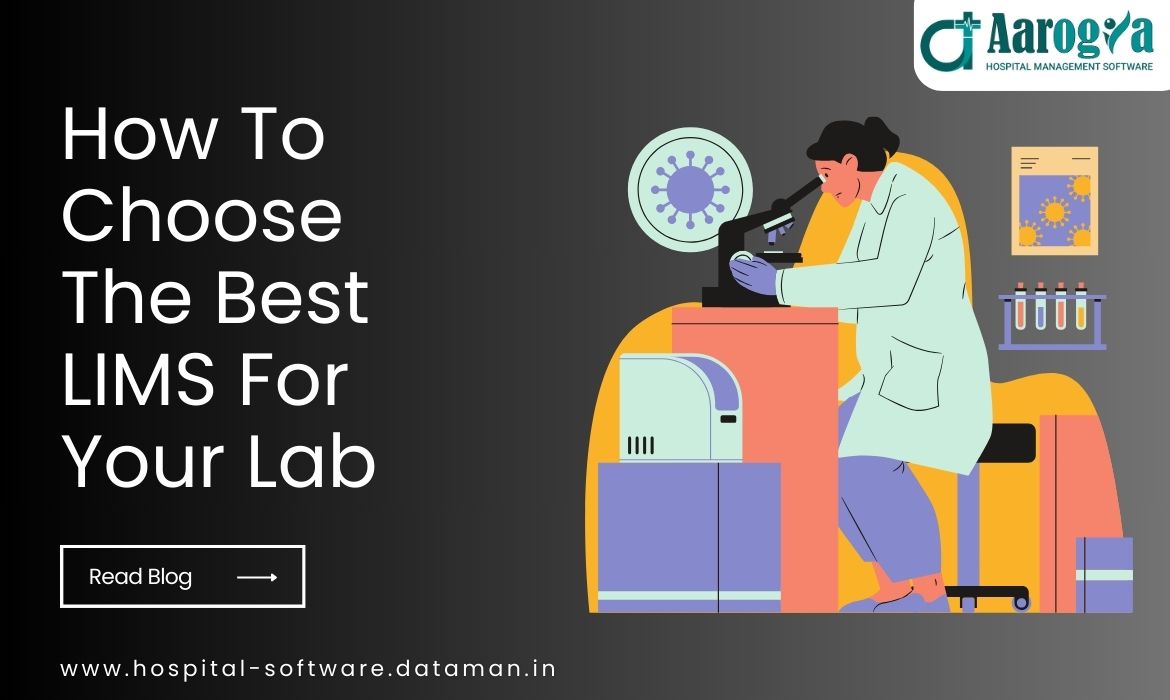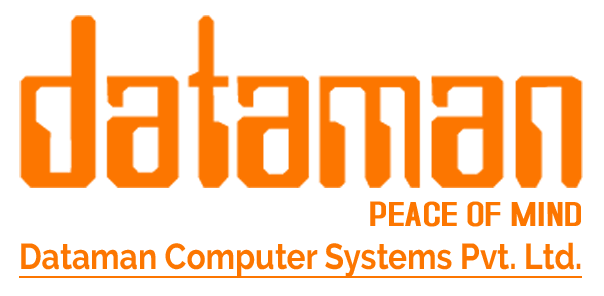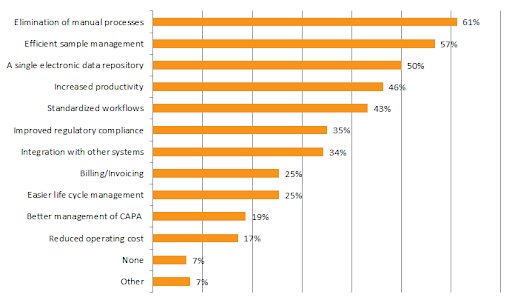- +91 9511117684
- shweta@dataman.in

Table of Contents
Post Views: 15,548
If you’re someone with the vision to start a pathological laboratory or if you’ve already started setting up, congratulations on coming this far! Because starting a Lab is no joke. It requires a good amount of work, capital and brainstorming to make important decisions. Therefore, you deserve to get the best output possible, and your lab a faithful technological friend, i.e. Laboratory Information Management System (LIMS).
The significance and value provided by LIMS can be estimated from the study report which indicates that LIMS has provided a number of workflow efficiencies including report results that:
- 61% of LIMS users benefited from the elimination of manual processes,
- 57% gained improvements in their sample management strategy, and
- 46% showed a significant increase in productivity within their laboratory environment.
So, sit back and relax because here we’re going to help you in choosing the best LIMS Software for your lab and we’ll also discuss the advantages of choosing an integrated HMIS LIMS.
But first, what is LIMS?
LIMS is an integrated software solution designed to manage lab data and processes seamlessly. It automates workflows, securely manages patient details, tracks sample location and its associated data, helps in maintaining compliance, integrates instruments and provides precision and accuracy in results. LIMS improves overall efficiency and productivity of labs. Hence, a Laboratory Information System is what you need to get the best out of your laboratory.
If you are not much acquainted with LIMS or need further explanation, please refer to this article.
Now! If you are new to LIMS, there are many factors to consider and information overload that might be confusing or overwhelming you.
Therefore, in this article we are providing you with a guide containing points and questions to consider and keep in mind when you’re searching for the best LIMS for your lab:
To know What is HMIS ?
Become Clear with Present And Future Needs Of Your Lab| Know Your Lab
The truth is, there is no such thing as “the best” LIMS in the market. Ultimately, it all depends on you and your lab’s requirements. It’s important that you sit down and take an inventory of your laboratory’s requirements and the vision you have for your lab:
- How many varieties of tests do you want to perform?
- The volume and types of samples your lab is going to handle daily?
- What is the scope of growth in these areas in future?
- How many users are going to access the system?
- Is there any specialized functionality you need for your lab?
Based on those requirements check if the LIMS is flexible, configurable, easy to implement and adaptable to not just present but future needs and requirements as well.
How easy and smooth is it to use the LIMS?
You don’t want to waste your team’s time handling complicated softwares instead of focusing on their expertise. You need a LIMS with simple, integrated and user-friendly interfaces. Search for LIMS with configurable dashboards, intuitive navigation and easy-to-use features as they are preferred by healthcare professionals. Configurable really does beat custom so ensure that LIMS can be “configured” by your team easily based on your needs whenever required. Also try to look for LIMS in which you get training support so that whenever your operators need any help they have a POC.How good is LIMS at tracking and managing sample data?
The primary function of LIMS is comprehensive management of sample data from sample collection to report generation. For deeper understanding on key features of LIMS that assist in sample management, please read. Therefore, check for these key features:How easily does LIMS integrate with the instruments and machines in your lab?
One of the most important features you need to check in LIMS to ensure precision and accuracy in results is instrument integration. It eliminates data silos, and manual data entry errors, creating a smooth and cohesive workflow.
Make sure that the LIMS you are choosing integrates seamlessly and is compatible with your existing laboratory instruments, analysers and other software systems because disconnected systems and lack of communication/integration with key instruments and/or systems is the biggest challenge in LIMS usage for 48% of respondents as per the report.
What is your Budget?
As much as you want the best LIMS for your lab, along with an integration with HMIS, you are still constrained with your budget. The cost is going to include everything from ownership cost, initial setup, initial and ongoing training cost, maintenance to potential upgrades. Also check if any new hardware or network is required and additional modules to be purchased. Evaluate the return on investment (ROI) based on improved efficiency, reduced errors, and overall laboratory productivity.
How the chosen LIMS provides data security and ensures compliance?
It is paramount for your pathological lab to be in compliance with the regulations, such as NABL, HIPAA. Ensure that the LIMS you are choosing is designed to meet these standards and has Quality Control (QC)/ Quality Assurance (QA) features at each step of the sample processing. An integrated LIMS with robust features of data security, audit trails and electronic signatures is the best one out there for you. Also remember that regulatory standards are subject to change, hence, ensure the flexibility of LIMS in this area.
How reliable and trustworthy is the vendor?
Ask for demos from the vendors you’re considering. Don’t just go by their words, ask their existing customers. Questions to consider : How satisfying is the customer support? Is the product keeping up with the ongoing demands of the industry (through frequent updates and upgrades)? How easily do they deal with the issues popping up? How helpful the product has been in managing lab’s data and improving efficiency and overall productivity?
What is the architecture of the LIMS and which one suits you best?
To choose the right architecture consider factors such as the size of the lab, complexity of workflows, data management requirements and budget consideration. There are three common types of LIMS architecture and we are providing a brief idea about them:
On-Premise LIMS: It involves installing and maintaining the software on the lab’s servers and infrastructure. The laboratory is responsible for hardware expenses, security and system maintenance.
The advantages of on-premise LIMS are:
- You’ll have full control over data and
- You can configure the system to meet specific requirements.
And the disadvantages are:
- There’s going to be higher upfront costs for hardware and software,
- Maintenance and updates are the laboratory’s responsibility
- Accessibility would be limited outside the physical laboratory.
Cloud-Based LIMS: Cloud-based LIMS is hosted on remote servers and accessed over the internet. Users connect to the LIMS through web browsers and mobile apps, and the software provider manages maintenance, updates, and security.
The advantages include:
- Lower upfront costs as there is no need for significant hardware investments,
- Accessibility from any location with internet connection
- Automatic updates and maintenance handled by the LIMS provider.
- Better Scalability.
But there are certain considerations to be made:
- There are concerns for data security and compliance depending on the provider.
- The other thing is Cloud-based LIMS depends on internet connectivity for real-time access, so you have to be extra cautious about your lab’s internet connections and availability.
Hybrid LIMS: This architecture combines elements of both on-premise and cloud-based solutions. Critical components may be hosted on-site, while less sensitive functions or data storage may be managed in the cloud.
This provides a balance of advantages of both the above architectures like:
- Offering balance between control and flexibility,
- Allowing customization of on-premise components
- Leveraging the scalability of the cloud and
- Providing enhanced disaster recovery and backup options;
But there’s a key consideration that this may involve additional complexity in terms of system management.
Ultimately the choice depends on the needs, priorities and resources of your lab. Therefore, we suggest you carefully weigh every option and consult with LIMS vendors to determine the best fit for your lab.
Is it Unified? And the advantages of a unified LIMS
Although the primary function of LIMS is sample data management, there’s much more to it. LIMS can help you maintain your inventories and store vendor data, maintain financial receipts, keep a record of the health of your integrated instruments and machines, guide in Quality Control Checks, prevent errors, and provide automatic notifications to patients about their reports. These features when integrated and unified in a single system enhances productivity, efficiency, precision, speed and customer satisfaction altogether. Compare products with these features within your budget range. But there’s something important we want to suggest: there are many companies that provide LIMS integrated in HMIS(Hospital Management Information System). HMIS is a robust and comprehensive software solution integrating data of every department of a hospital at one place. An HMIS will help you find above discussed features alongside your LIMS, hence, saving you the complexity to make your LIMS integrate with your ERP/Financial system, Inventory management softwares and others. You can easily ask for customisations aligned with your specific requirements. There you can easily find many more features like:- Patient Appointment and Registration
- TPA Management
- Purchase and Inventory Management
- Payroll and Financial Reports
Wrapping Up
Selecting the best LIMS for your pathological laboratory requires you to have clarity on your lab’s unique needs, vision, data concerns, scope of growth, priorities, resources and your return on investment expectations. Therefore, we hope considering the above discussed factors may help you make an informed decision that will not only improve efficiency and productivity of your lab but also contribute to enhancing patient care and satisfaction and diagnostic outcomes. Embrace the transformative power of LIMS and allow us to serve you with Aarogya, one of the best LIMS solutions in the market to help you scale and transform your lab to bring the best out of it.Contact us at +91 94154 06213 for a Free Demo or Visit our website for more information.
0



